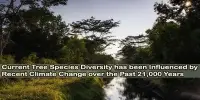The Climate Vulnerability Monitor (CVM) is an unbiased global assessment of the impact of climate change on the world’s populations that has been assembled by panels of significant international experts. It is a publication that examines countries’ and populations’ vulnerability to the effects of climate change. It includes in-depth research and data on how climate change affects various regions, as well as highlighting the social, economic, and environmental effects of global warming.
The Monitor was inaugurated in December 2010 in London and Cancun to coincide with the UN Climate Change Conference (COP-16) in Cancun. The report, created by DARA and the Climate Vulnerable Forum, is intended to serve as a new instrument for assessing global susceptibility to various effects of climate change inside various nations.
The report distills top science and research to provide a clearer explanation of how and where communities are affected by climate change today (2010) and in the near future (2030), as well as critical strategies to mitigate these consequences. On September 26, 2012, DARA and the Climate Vulnerable Forum unveiled the second edition of the Climate Vulnerability Monitor at the Asia Society in New York.
Objectives
The Climate Vulnerability Monitor tries to show how each country is vulnerable to climate change (due to health concerns, extreme weather patterns, economic factors, land loss from increasing deserts, or rising sea levels). It includes a list of more than 50 solutions that the authors argue are readily available to limit practically all of the damage caused by climate change.
The monitor typically includes information on:
- Climate-Related Risks: It assesses the various risks associated with climate change, such as extreme weather events, rising sea levels, droughts, floods, and more.
- Economic Impacts: The monitor often evaluates the economic consequences of climate change, including losses in agricultural productivity, damage to infrastructure, increased healthcare costs, and the overall impact on a country’s GDP.
- Health Implications: It examines the health risks posed by climate change, such as increased heat-related illnesses, the spread of infectious diseases, and challenges to healthcare systems.
- Environmental Consequences: The report may discuss the impact of climate change on ecosystems, biodiversity, and natural resources, including water availability and food security.
- Social and Humanitarian Effects: It examines the social and humanitarian elements of climate change, such as population displacement owing to extreme weather events, resource conflicts, and the possibility of climate-induced migration.
The Climate Vulnerability Monitor is normally updated on a regular basis to reflect the most recent research and data on climate change and its consequences. It is a great resource for governments, scholars, and organizations working to solve climate change concerns and improve resilience in vulnerable communities. It is important to note, however, that the availability and specific content of the Climate Vulnerability Monitor may differ depending on the organization or institution that produces it.
















